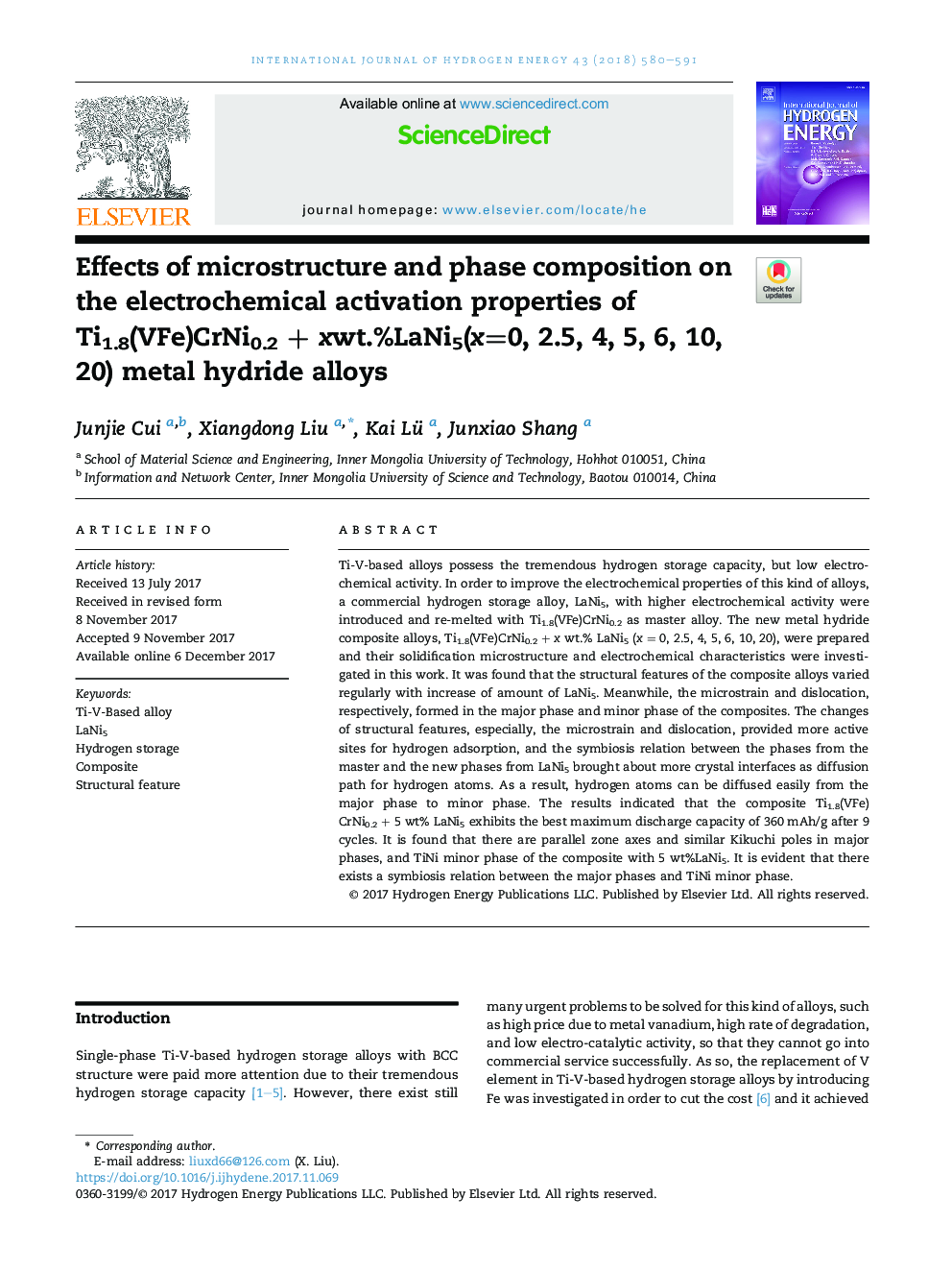| Article ID | Journal | Published Year | Pages | File Type |
|---|---|---|---|---|
| 7708478 | International Journal of Hydrogen Energy | 2018 | 12 Pages |
Abstract
Ti-V-based alloys possess the tremendous hydrogen storage capacity, but low electrochemical activity. In order to improve the electrochemical properties of this kind of alloys, a commercial hydrogen storage alloy, LaNi5, with higher electrochemical activity were introduced and re-melted with Ti1.8(VFe)CrNi0.2 as master alloy. The new metal hydride composite alloys, Ti1.8(VFe)CrNi0.2 + x wt.% LaNi5 (x = 0, 2.5, 4, 5, 6, 10, 20), were prepared and their solidification microstructure and electrochemical characteristics were investigated in this work. It was found that the structural features of the composite alloys varied regularly with increase of amount of LaNi5. Meanwhile, the microstrain and dislocation, respectively, formed in the major phase and minor phase of the composites. The changes of structural features, especially, the microstrain and dislocation, provided more active sites for hydrogen adsorption, and the symbiosis relation between the phases from the master and the new phases from LaNi5 brought about more crystal interfaces as diffusion path for hydrogen atoms. As a result, hydrogen atoms can be diffused easily from the major phase to minor phase. The results indicated that the composite Ti1.8(VFe)CrNi0.2 + 5 wt% LaNi5 exhibits the best maximum discharge capacity of 360 mAh/g after 9 cycles. It is found that there are parallel zone axes and similar Kikuchi poles in major phases, and TiNi minor phase of the composite with 5 wt%LaNi5. It is evident that there exists a symbiosis relation between the major phases and TiNi minor phase.
Related Topics
Physical Sciences and Engineering
Chemistry
Electrochemistry
Authors
Junjie Cui, Xiangdong Liu, Kai Lü, Junxiao Shang,
